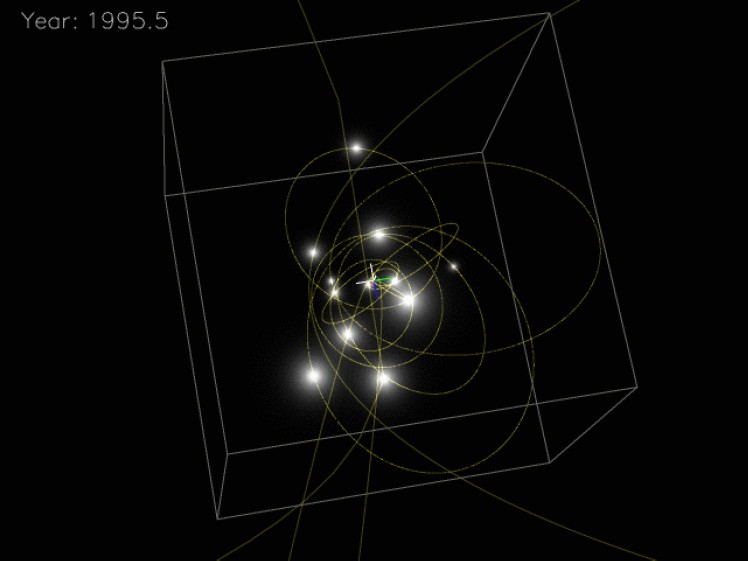
# The Influence of *Sidereus Nuncius* and Galileo Galilei’s Ascent in Science
Before 1610, Galileo Galilei was an unnoticed mathematician, occupying the lowest position of professor at the University of Padua. While his skills were clear and he studied motion and gravity, he had not yet released any significant writings. This situation changed dramatically with the release of *Sidereus Nuncius*, a brief astronomical work that transformed Galileo’s career and shifted the trajectory of scientific history.
## The Turning Point: *Sidereus Nuncius*
Released in March 1610, *Sidereus Nuncius* (*The Starry Messenger*) showcased Galileo’s telescopic discoveries of the heavens. His identification of Jupiter’s four largest moons, which he referred to as the “Medicean Stars” to honor the influential Medici family, was essential for his shift from academic obscurity to a respected position at the Medici court in Florence. In this role, he acted as the court mathematician and philosopher, enjoying the absence of teaching responsibilities but facing various intellectual and political challenges.
### A Bold Career Move and its Risks
Galileo’s relocation to Florence provided both prospects and peril. Unlike the relatively autonomous academic setting of Venice, where he had previously been, Florence placed him under the scrutiny of the Catholic Church. His friend and advisor Paolo Sarpi cautioned him about the potential dangers of coming under the gaze of the Roman Inquisition, a forewarning that would become significant decades later.
## Galileo’s Role at the Medici Court
Within the Medici court, Galileo’s duties resembled those of a court intellectual or even a jester—expected to impress with his intellect and charm while participating in public discussions. This time marked his initial major controversy, culminating in his 1612 release of *Discorso intorno alle cose che stanno in su l’acqua, o che in quella si muovono* (*Discourse on Bodies that Stay Atop Water, or Move in It*).
## Floating Bodies and Aristotelian Opponents
Galileo’s *Discourse on Floating Bodies* arose from a vigorous debate with Aristotelian philosophers at the court. The dispute originated from a conversation about the reasons ice floats on water. Galileo, adhering to Archimedean principles, argued that ice must have a lower density than water, whereas his Aristotelian adversaries claimed that its shape accounted for its buoyancy.
### A Challenge by Lodovico delle Colombe
Lodovico delle Colombe, a devoted Aristotelian who opposed Galileo’s heliocentric theories, contested Galileo’s assertion by presenting an experiment: a flat ebony chip, despite its density being greater than that of water, could float, while a spherical one would sink. Galileo sought to counter this by suggesting that the floating chip was surrounded by an air pocket, thus decreasing its effective density. However, he did not fully grasp the concept of surface tension, which is now understood to explain this occurrence.
### Court Debates and the Grand Duke’s Intervention
The intensifying public feud prompted Cosimo II de’ Medici to step in. Unhappy with Galileo’s engagement in what he deemed an undignified spectacle, the Grand Duke organized a court debate featuring Galileo and an Aristotelian opponent, Flaminio Papazzoni, each presenting their arguments. Cardinals Maffeo Barberini (who later became Pope Urban VIII) and Ferdinand Gonzaga joined the discourse, but the main aim of the debate was to entertain rather than seek any intellectual clarity.
Cosimo II directed Galileo to address his critics in writing instead of continuing public disputes, which resulted in the publication of *Discorso intorno alle cose che stanno in su l’acqua*. Although often overlooked today, this work represented another step in Galileo establishing himself as a prominent scientific thinker.
## The Scientific Importance of *Discourse on Floating Bodies*
Galileo’s treatise adhered to the Archimedean tradition of mathematical physics in examining buoyancy and hydrostatics. However, distinct from prior treatments of these topics by mathematicians like Simon Stevin, Galileo emphasized the issue of motion in water. His mathematical representations of fluid dynamics were, nonetheless, incomplete and lacked the precision shown by Stevin.
Another shortcoming in Galileo’s book was his unconventional explanation for the floating ebony chip. Rather than acknowledging the impact of surface tension (which was not then understood), he insisted on an “air envelope” as the reason for the observed buoyancy. Despite these inaccuracies, the book reinforced the Archimedean perspective and challenged Aristotelian norms.
## Responses and Legacy
Though confident in his arguments, Galileo’s publication encountered pushback from Aristotelian scholars, resulting in four counter-arguments, including *Discorso Apologetico*.